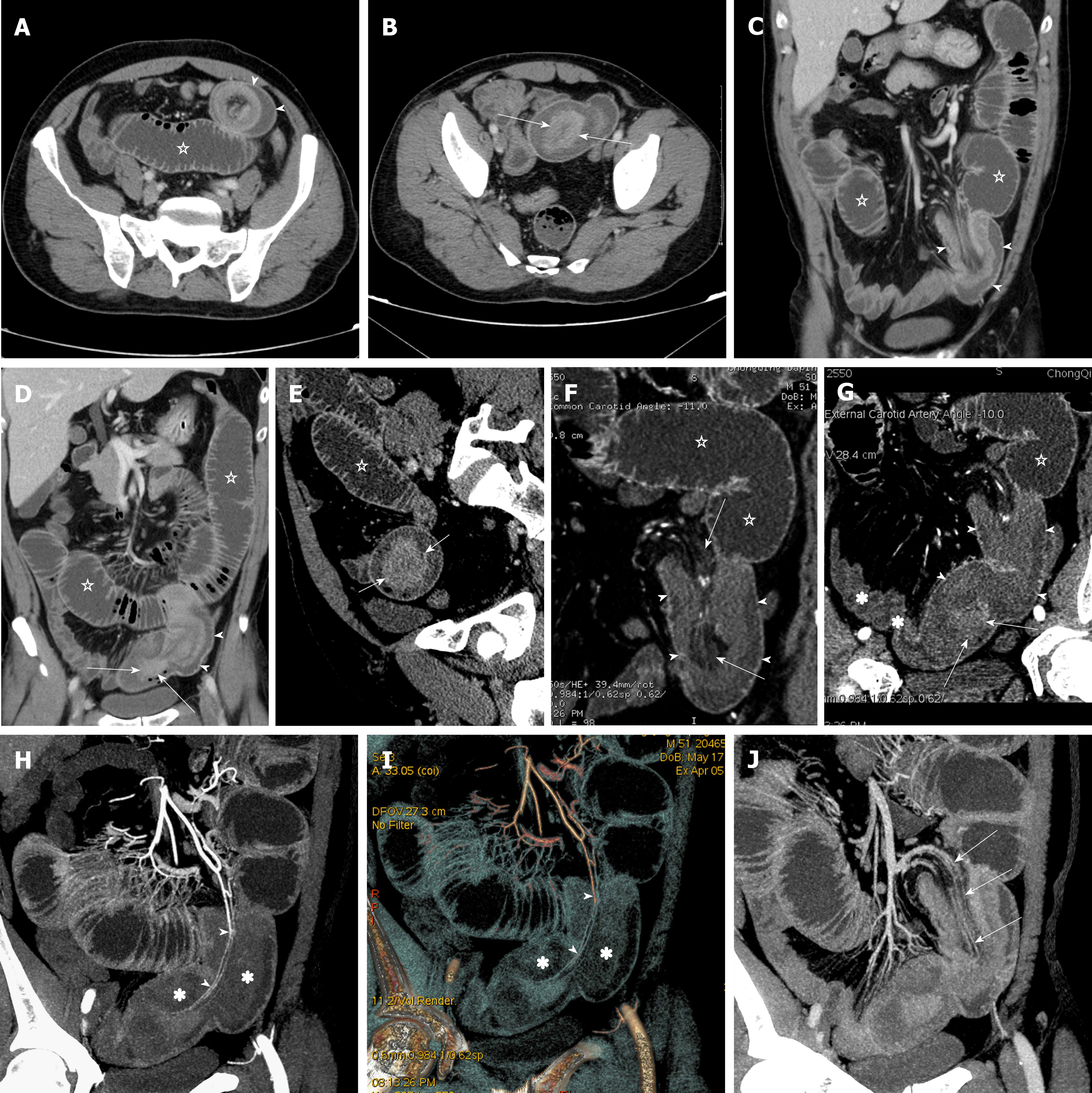Copyright
©The Author(s) 2019.
World J Gastroenterol. Mar 7, 2019; 25(9): 1100-1115
Published online Mar 7, 2019. doi: 10.3748/wjg.v25.i9.1100
Published online Mar 7, 2019. doi: 10.3748/wjg.v25.i9.1100
Figure 2 Protocol 2 applied in a 51-year-old man with a gastrointestinal stromal tumor causing intussusception and small bowel obstruction.
A-D: Multidetector computed tomography conventional axial and coronal reformations of the abdomen display a lamellar structure arranged in a concentric circle (arrowheads) and a mass (arrows) with a size of 4.8 cm × 2.9 cm × 1.9 cm at the distal end of the intussusception, and the bowel loops (pentagram) proximal to the intussusception are severely dilated with a maximum diameter of 5.1 cm. E and F: Multi-planar reformation images obtained from any direction and angle could clearly reveal the mass (short arrows), intussusception (arrowheads) and dilated proximal bowel loops (pentagram), and mesenteric haziness (long arrows) in the invaginating mesentery. G: Curved planar reformation image more clearly defining the anatomical relationship among the mass (arrows), intussusception (arrowheads), dilated proximal bowel loops (pentagram), and collapsed distal bowel loops (asterisk). H and I: Maximum intensity projection (MIP) and volume rendering images obtained in the arterial phase clearly showing the invaginating mesenteric artery branches (arrowheads) with superior contrast enhancement, and decreased bowel wall enhancement in the invaginating bowel (asterisk). J: MIP image obtained in the portal venous phase revealing poor contrast enhancement in the invaginating mesenteric veins (arrows) compared with the adjacent mesenteric vein branches. The poor contrast enhancement of the invaginating mesenteric veins and the decreased bowel wall enhancement of the invaginating bowel segment imply the presence of secondary bowel ischemia.
- Citation: Kuang LQ, Tang W, Li R, Cheng C, Tang SY, Wang Y. Optimized protocol of multiple post-processing techniques improves diagnostic accuracy of multidetector computed tomography in assessment of small bowel obstruction compared with conventional axial and coronal reformations. World J Gastroenterol 2019; 25(9): 1100-1115
- URL: https://www.wjgnet.com/1007-9327/full/v25/i9/1100.htm
- DOI: https://dx.doi.org/10.3748/wjg.v25.i9.1100









